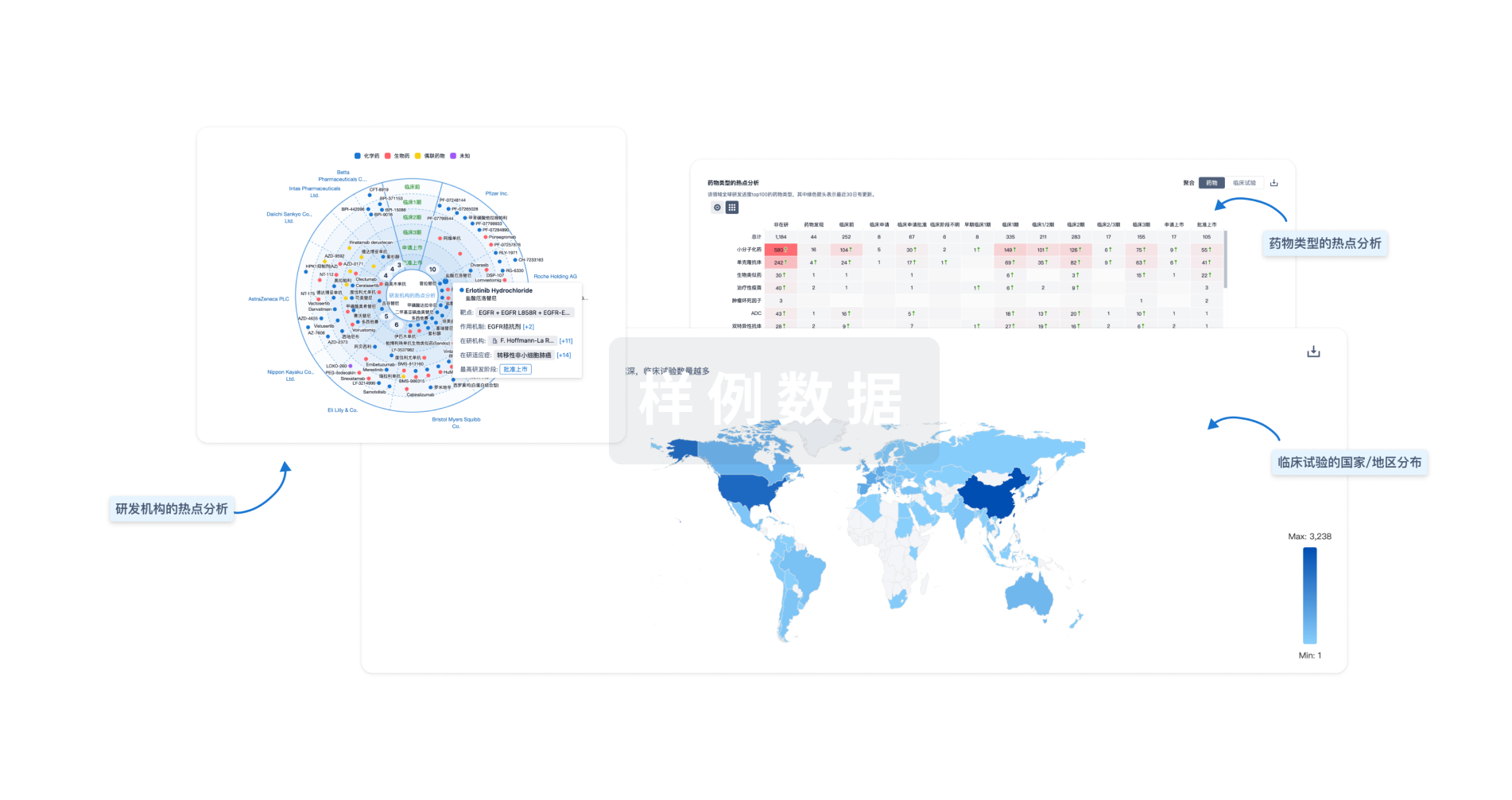预约演示
更新于:2025-05-07
Senile cataract
老年性白内障
更新于:2025-05-07
基本信息
别名 Age-related cataract、CATARACT SENILE、Cataract;senile + [17] |
简介 An age-related, anatomical abnormality that is caused by thickening of the lens of the eye. |
关联
3
项与 老年性白内障 相关的药物靶点- |
作用机制- |
在研机构 |
原研机构 |
非在研适应症- |
最高研发阶段临床3期 |
首次获批国家/地区- |
首次获批日期1800-01-20 |
靶点- |
作用机制- |
在研机构 |
原研机构 |
在研适应症 |
非在研适应症- |
最高研发阶段临床2期 |
首次获批国家/地区- |
首次获批日期1800-01-20 |
靶点- |
作用机制- |
在研机构- |
在研适应症- |
非在研适应症 |
最高研发阶段无进展 |
首次获批国家/地区- |
首次获批日期1800-01-20 |
481
项与 老年性白内障 相关的临床试验NCT06891092
Comparison of Quality of Vision After Implantation of Monofocal Depth-enhanced Intraocular Lenses in Patients Undergoing Bilateral Cataract Surgery
Comparison of the outcomes of bilateral implantation of extended depth of vision (EDOF) intraocular lenses (IOLs): the Rayone EMV and the Vivinex Impress XY1-EM in patients with cataract
开始日期2025-06-01 |
NCT06948773
A Pilot Study of the Helix Surgical System in Subjects With Primary Open-Angle Glaucoma (POAG) and Cataract.
A study to assess the safety of the Helix Surgical System in cataract surgery and to gain early evidence of its effectiveness in lowering intraocular pressure (IOP) in subjects with mild to moderate primary open-angle glaucoma (POAG) and cataracts.
开始日期2025-04-30 |
申办/合作机构 |
CTRI/2025/04/084360
Effect of temperature on Intraocular lens unfolding time in cataract surgery - nil
开始日期2025-04-21 |
申办/合作机构- |
100 项与 老年性白内障 相关的临床结果
登录后查看更多信息
100 项与 老年性白内障 相关的转化医学
登录后查看更多信息
0 项与 老年性白内障 相关的专利(医药)
登录后查看更多信息
3,897
项与 老年性白内障 相关的文献(医药)2025-12-01·Genes & Nutrition
Exploring causal relationships between circulating micronutrients and age-related eye diseases: a Mendelian randomization study
Article
作者: Jiang, Zhixin ; Cao, Xiang ; Zhang, Boyang ; Xu, Zijiao ; Yuan, Xiaoyong
2025-06-01·Biochimica et Biophysica Acta (BBA) - Molecular Basis of Disease
HUWE1-mediated ubiquitination and degradation of oxidative damage repair gene ATM maintains mitochondrial quality control system in lens epithelial cells
Article
作者: Zhang, Guowei ; Guan, Huaijin ; Bao, Sijie ; Shi, Haihong ; Ji, Min ; Wang, Congyu ; Wang, Siwen ; Li, Pengfei ; Kang, Lihua
2025-06-01·Experimental Eye Research
APEX1 attenuates ERS-induced paraptosis by inhibiting the P53 pathway in LECs
Article
作者: Geng, Wenjing ; Zhong, Renhao ; Kang, Lihua ; Xu, Linhui ; Ji, Min ; Zhang, Guowei ; Zhou, Mengying ; Li, Pengfei ; Zhang, Kai ; Guan, Huaijin ; Wu, Miaomiao
12
项与 老年性白内障 相关的新闻(医药)2024-09-26
点击上方蓝字,即刻订阅哦!
在谈论营养与健康时,我们通常会把注意力集中在可以用数字表现的明显好处上,比如保持理想体重或降低血压。这些标准的健康改善是很容易认识到的,但正确的食物选择也确实能带来一些不那么明显的益处,比如有助于保持我们各个年龄段的视力质量。
在饮食中应选择哪些食物和营养素,才能有助于眼睛健康?约翰·霍普金斯医疗集团威尔默眼科研究所的眼科医生 Mona Kaleem 给出了她的建议。
维生素
抗氧化剂能清除体内潜在破坏性氧化剂的营养物质,对我们的眼睛健康起着至关重要的作用。氧化是导致细胞衰老和死亡的原因之一。抗氧化剂能以多种方式减缓这一过程。维生素 A、C 和 E 都属于这类营养素。
维生素 A
维生素 A 又称视黄醇,它能产生眼睛视网膜上的色素。更重要的是,它是眼睛光感受器的重要营养素,光感受器决定了弱光环境下的视力质量。维生素 A 只存在于动物产品中,但人体可以将一些植物营养素转化为维生素 A。
维生素 A 的食物来源包括:
蛋黄
奶制品
肝脏
菠菜和其他深色绿叶菜
胡萝卜
维生素 C
维生素 C(又称抗坏血酸)是一种众所周知的营养物质,在眼睛晶状体前方的房水中浓度很高。它被认为是预防老年性白内障的关键抗氧化剂。人体自身无法产生这种营养物质,但可以在多种水果和蔬菜中轻易找到。
维生素 C 的食物来源包括:
西兰花
羽衣甘蓝
辣椒
橙子
维生素 E
维生素 A 和维生素 C 是单一化合物,而维生素 E 则不同,它是一组名为生育酚和生育三烯酚的化合物。这些化合物通过保护重要的脂肪酸不被氧化,间接地对眼睛有益。缺乏维生素 E 的情况相当罕见,但如果担心缺乏,可以从几种食物中获取维生素。
维生素 E 的食物来源包括:
杏仁
葵花籽
鳄梨
其他营养素
维生素 A、C 和 E 并不是唯一具有抗氧化特性、对眼睛有益的营养素。类胡萝卜素和类黄酮等化合物以及矿物质硒也是饮食中有助于眼睛健康的营养素。
类胡萝卜素
这些色素化合物赋予了许多水果和蔬菜独特的颜色。有两种类胡萝卜素对眼睛特别重要:叶黄素和玉米黄质。这些化合物存在于眼睛后部视网膜的感光组织中。
类胡萝卜素的食物来源包括:
莙荙菜
菠菜
羽衣甘蓝
覆盆子
桃子
类黄酮
这些化合物存在于多种植物中。类黄酮与视网膜神经节细胞功能的改善有关,视网膜神经节细胞是连接视网膜和大脑处理视觉输入的神经元。含咖啡因的热茶中的类黄酮可降低患原发性开角型青光眼(POAG)的风险。在与眼睛健康有关的化合物中,黄酮类化合物是独一无二的,通过摄入多种来源的黄酮类化合物而不是特定数量的黄酮类化合物,可以获得最佳益处。
类黄酮的食物来源包括:
黑巧克力
红葡萄酒
浆果
柑橘类
茶
硒
硒是一种重要的矿物质,对多种眼部疾病(包括老年性黄斑变性和白内障)具有预防性抗氧化作用。最值得注意的是,缺硒与甲状腺眼病有关。硒存在于各种食物中,但由于这种矿物质在土壤中的分布并不均匀,因此硒的含量会有很大差异。
硒的食物来源包括:
乳制品
鸡蛋
海鲜
坚果
种子
脂肪酸
脂肪酸是人体消化脂肪时产生的化合物,它们对眼睛的一系列功能起着支持作用。其中,ω-3脂肪酸 和γ-亚麻酸(GLA)这两种脂肪酸对许多眼部疾病都具有显著的相关性和预防价值。
ω-3脂肪酸
ω-3脂肪酸对维护眼睛健康非常重要。它们有助于眼睛细胞膜的结构,支持视觉功能。此外,ω-3 还具有抗炎特性,有助于缓解干眼症症状,降低患老年性黄斑变性和青光眼的风险。
ω-3的食物来源包括:
三文鱼
鲭鱼
沙丁鱼
亚麻籽
奇亚籽
核桃
γ-亚麻酸
γ-亚麻酸是一种ω-6 脂肪酸,在维持健康视力方面发挥着至关重要的作用。γ-亚麻酸有助于体内产生抗炎化合物,有助于缓解干眼症症状,降低患糖尿病视网膜病变和白内障等眼部疾病的风险。
γ-亚麻酸的来源包括:
樱草油
琉璃苣油
黑醋栗籽油
大麻籽
螺旋藻
地中海饮食
将上述多种营养素纳入饮食的一个简单方法是采用地中海饮食。地中海饮食中的水果、蔬菜和全谷物提供了与眼睛健康有关的大部分抗氧化剂,包括维生素 A、C 和 E、类胡萝卜素和硒。地中海饮食还包括大量的肥鱼,如三文鱼和沙丁鱼,它们富含欧米伽-3 脂肪酸。
虽然从整个食物中获取必需的营养物质是最理想的做法,但对于有饮食限制或难以获得某些食物的人来说,补充剂也是有益的。不过,在开始服用任何补充剂之前,一定要咨询医疗保健专业人员,以确保安全和有效。
免责申明:
此信息仅用于科普目的,不能代替医疗意见。本文由约翰·霍普金斯医疗集团发布,未经允许,不得转载。
编辑:Joan Liu
资料来源:
https://www.hopkinsmedicine.org/health/wellness-and-prevention/nutrition-and-eye-health
↙↙预约就诊:点击“阅读原文”
AHA会议
2024-09-20
·医药观澜
▎药明康德内容团队报道
今日(9月20日),中国国家药监局药品审评中心(CDE)官网公示,由EyePoint Pharmaceuticals和欧康维视(Ocumension)等联合申报的地塞米松植入剂上市申请已获得受理。这是欧康维视引进的治疗术后炎症的新药OT-502(商品名:DEXYCU)。它是一种新型、可生物降解的单次注射的缓释抗炎药物,可在注射后即刻释放活性成分地塞米松发挥抗炎作用,持续释放21-22天。该产品此前在中国的3期临床研究已经达到主要终点。
图片来源:CDE官网
炎症是白内障术后常见的并发症,如不及时控制可能导致严重后果。目前常规使用激素和抗生素滴眼液控制术后炎症,但对于年龄较大、依从性欠佳的老年性白内障患者而言,其术后炎症控制效果并不理想。
公开资料显示,OT-502是一种新型、可生物降解的缓释抗炎药物,旨在为眼科医生提供一种术毕单次注射缓释激素的选择。该药物利用Verisome药物输送技术将地塞米松递送至眼前房,直接抑制前房内炎症介质的合成和释放,能在术后持续、稳定地抑制前房炎症反应,避免频繁使用激素滴眼液,有效解决了部分白内障患者术后用药依从性不佳的严重问题,为白内障术后炎症管理提供更好的选择。
此前OT-502已于2018年在美国获批上市,用于治疗术后炎症。欧康维视已经与EyePoint公司订立独家许可协议,获得OT-502在大中华区、韩国以及东南亚11个国家的进口、开发及商业化权利。
今年4月,欧康维视宣布一项评价9%地塞米松植入剂治疗白内障术后炎症的有效性和安全性的3期临床试验达到主要终点、研究结果显示,OT-502达到预设的主要疗效终点,第8天时前房细胞分级为0级的受试者比例显著高于安慰剂组,证明了本品在控制白内障术后炎症方面安全有效。
欧康维视致力于识别、开发和商业化眼科创新疗法。根据该公司2024年中期报告介绍,该公司建立了完整的眼科药物产品管线,已拥有25种眼前及眼后段药物资产,其中3款产品正处于3期临床试验阶段,3款创新药物已进入注册阶段。本次这款地塞米松植入剂申报上市,也意味着该公司研发管线迎来新的进展。
参考资料:
[1] 中国国家药监局药品审评中心(CDE)网站.Retrieved Sep 20,2024, from https://www.cde.org.cn/main/xxgk/listpage/4b5255eb0a84820cef4ca3e8b6bbe20c
[2]治疗术后炎症新药OT-502(地塞米松植入剂)在中国完成III期临床试验,达到主要终点指标. Retrieved Apr 15, 2024 from https://mp.weixin.qq.com/s/fgXzQTzhAc146kCZfosWuw
本文由药明康德内容团队根据公开资料整理编辑,欢迎个人转发至朋友圈。转发授权或其他合作需求,请联系wuxi_media@wuxiapptec.com。
免责声明:药明康德内容团队专注介绍全球生物医药健康研究进展。本文仅作信息交流之目的,文中观点不代表药明康德立场,亦不代表药明康德支持或反对文中观点。本文也不是治疗方案推荐。如需获得治疗方案指导,请前往正规医院就诊。
临床3期上市批准申请上市
2024-07-01
TRUJILLO, Peru, July 1, 2024 /PRNewswire/ -- Today, eye care nonprofit Orbis International began a five-day on-site hospital training to enhance the skills of local eye care professionals in treating glaucoma. Despite it being the second-leading cause of blindness in Peru, there is a lack of necessary knowledge for treating the disease.
Continue Reading
Eye care professionals in Peru build sight-saving skills during an on-site hospital training led by Orbis in 2023. Photo: Geoff Oliver Bugbee
Held at the Regional Institute of Ophthalmology (IRO), the leading specialized eye hospital in the rural La Libertad region of northern Peru, the training will improve the surgical techniques of ophthalmologists – who are often the only specialists available for glaucoma care in the region – and train nurses to support these critical surgeries.
The training is made possible through generous funding from Dr. John E. Downing, an Orbis Volunteer Faculty member and donor, and equipment provided by Alcon.
"Dedicated, on-site trainings can make a huge difference in a rural area," says Dr. Doris Macharia, Senior Vice President of Global Programs at Orbis International. "When a hospital is the only option for specialized care, it's critical that its physicians and staff are equipped to handle both common and complex cases. We are grateful for the support that makes this training possible. It will build sight-saving skills that will ultimately transform lives."
Two ophthalmologists will receive hands-on training from Orbis Volunteer Faculty member Dr. Gabriel Lazcano Gomez, a glaucoma expert from Mexico. Four ophthalmic nurses will receive practical training from Orbis staff nurses. During the training, 32 patients with complex glaucoma will undergo surgery. Given that glaucoma primarily affects older individuals, any patients found to have age-related cataracts will receive treatment for this common cause of vision loss as well.
Participants will also learn best practices for educating patients on eye health and preventive care, which is especially important in glaucoma cases because blindness from the condition can be avoided, but only with access to early treatment.
On-site hospital training allows eye care professionals to learn new skills in their own work environment and with their own equipment, promoting confidence and sustainable improvements in patient care.
In Peru, eye care specialists are concentrated in urban areas, leaving rural communities underserved. The training at IRO aims to address this by enhancing the care provided, especially for challenging cases. It will also help IRO serve as a technical adviser for other ophthalmology service providers and community health facilities in northern Peru.
For more than four decades, Orbis has improved eye care access in Peru through training, fellowships, Flying Eye Hospital visits, and equipment donations. While Orbis is active in improving eye care in four regions, another 22 still need basic equipment and training.
About Orbis
Orbis is an international nonprofit delivering sight-saving programs in over 200 countries and territories worldwide so that individuals, families, and communities can thrive. Currently, around 1 billion people across the globe live with completely avoidable blindness and vision loss. For over four decades, Orbis has been tackling this challenge by building strong and sustainable eye care systems that leave a lasting legacy of vision. Orbis runs dedicated in-country programs in Africa, Asia, the Caribbean, and Latin America; develops and implements innovative training and technology, including an award-winning telemedicine and e-learning platform, Cybersight; and operates the world's first and only Flying Eye Hospital, a fully accredited ophthalmic teaching hospital on board an MD-10 aircraft. For the past 11 consecutive years, Orbis has achieved Charity Navigator's coveted four-star rating for demonstrating strong financial health and commitment to accountability and transparency, placing Orbis in the top 3% of U.S. charities. For the past three years, Orbis has earned GuideStar's platinum Seal of Transparency. In 2022, Orbis earned "accredited charity" status from the Better Business Bureau by meeting all 20 of their standards for charity accountability. To learn more, please visit orbis.org.
Media Contact
Jenna Montgomery
[email protected]
SOURCE Orbis International
分析
对领域进行一次全面的分析。
登录
或

生物医药百科问答
全新生物医药AI Agent 覆盖科研全链路,让突破性发现快人一步
立即开始免费试用!
智慧芽新药情报库是智慧芽专为生命科学人士构建的基于AI的创新药情报平台,助您全方位提升您的研发与决策效率。
立即开始数据试用!
智慧芽新药库数据也通过智慧芽数据服务平台,以API或者数据包形式对外开放,助您更加充分利用智慧芽新药情报信息。
生物序列数据库
生物药研发创新
免费使用
化学结构数据库
小分子化药研发创新
免费使用



